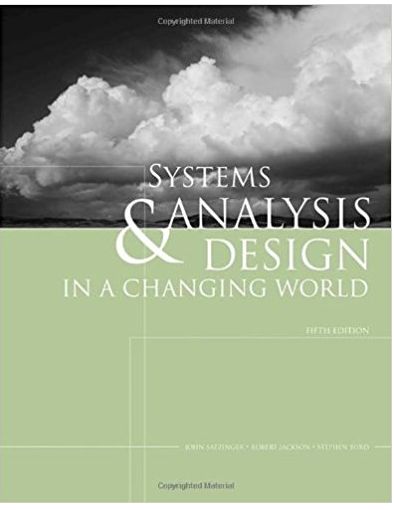Question:
Assume that RMO will begin asking a random sample of customers who order by telephone about purchases made from competitors. RMO will give customers a 15 percent discount on their current order in exchange for answering a few questions. To store and use this information, RMO will expand the ERD and class diagram with two new entities (classes) and three new relationships. The new entities (classes) are Competitor and Product Category. Competitor has a one-to-many relationship with Product Category, and the existing Customer entity (class) also has a one-to-many relationship with Product Category. Competitor has a single field (attribute) called Name. Product Category has four fields (attributes): Description, Dollar Amount Purchased, Month Purchased, and Year Purchased. Revise the relational database schema shown in Figure to include the new entities and relationships. All tables must be in3NF.
.png)
Transcribed Image Text:
Table Catalog CatalogProduct Customer Attributes CataloglD, Season, Year, Description, EffectiveDate, EndDate CataloglD, ProductlD, Price, SpecialPrice AccountNo, Name, BillingAddress, ShippingAddress, DayTelephoneNumber, NightTelephoneNumber Inventoryltem InventorylD, ProductID, Size, Color, Options, QuantityOnHand, AverageCost, ReorderQuantity Order OrderlD, AccountNo, OrderDate, PriorityCode, ShippingAndHandling, Tax, GrandTotal, EmailAddress, ReplyMethod, PhoneClerk, CallStartTime, LengthOfCall, DateReceived, ProcessorClerk Orderltem OrderltemID, OrderlD, IrventorylD, TrackingNo, Quantity, Price, BackorderStatus OrderTransaction OrderTransactionlD, OrderlD, Date, TransactionType, Amount, PaymentMethod Productltem Returnltem Shipment Shipper ProductlD, Vendor, Gender, Description ReturnltemlD, OrderlD, InventorylD, Quantity, Price, Reason, Condition, Disposal TrackingNo, ShipperiD, DateSent, TimeSent, ShippingCost, DateArrived, TimeArrived ShipperlD, Name, Address, ContactName, Telephone
.png)







